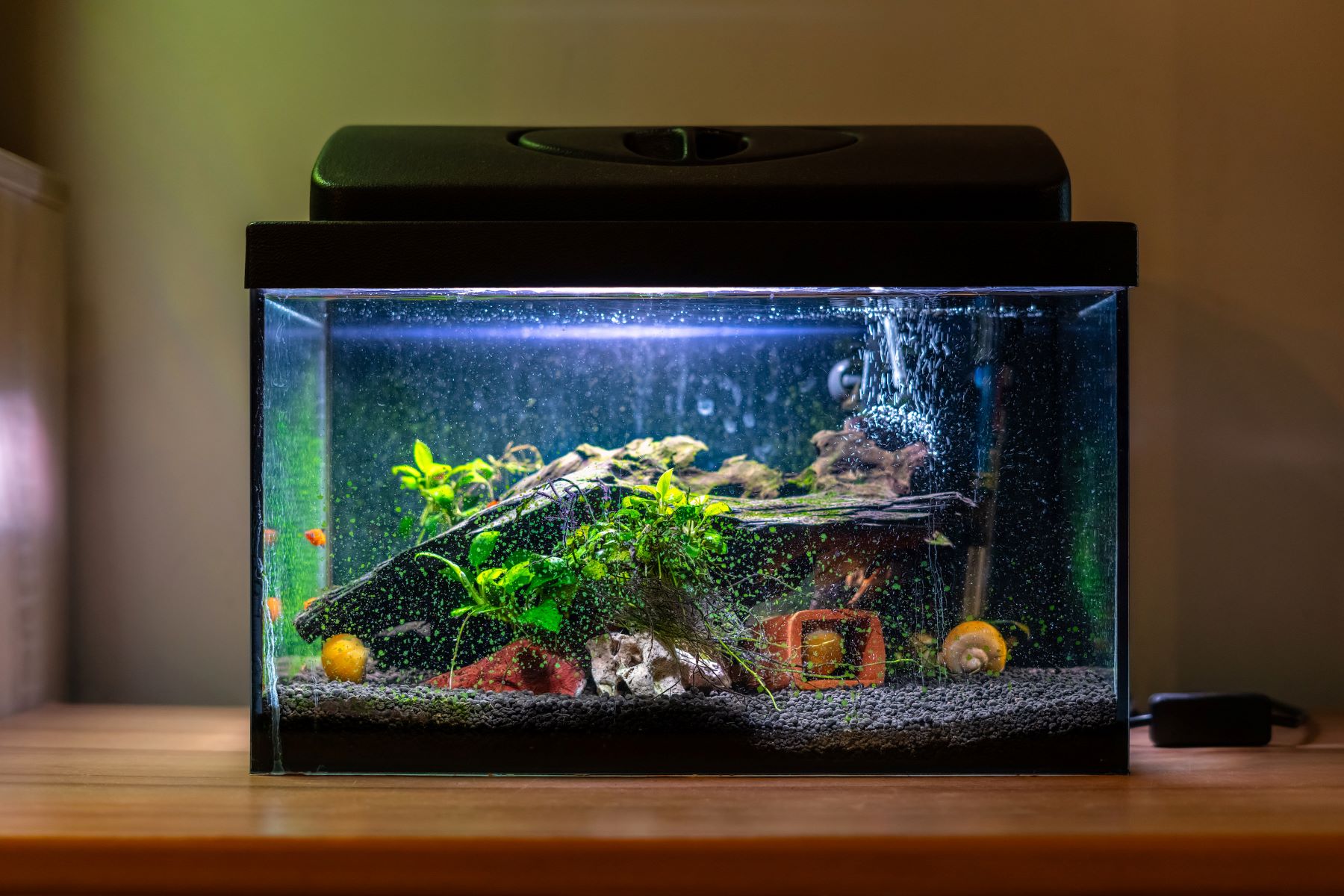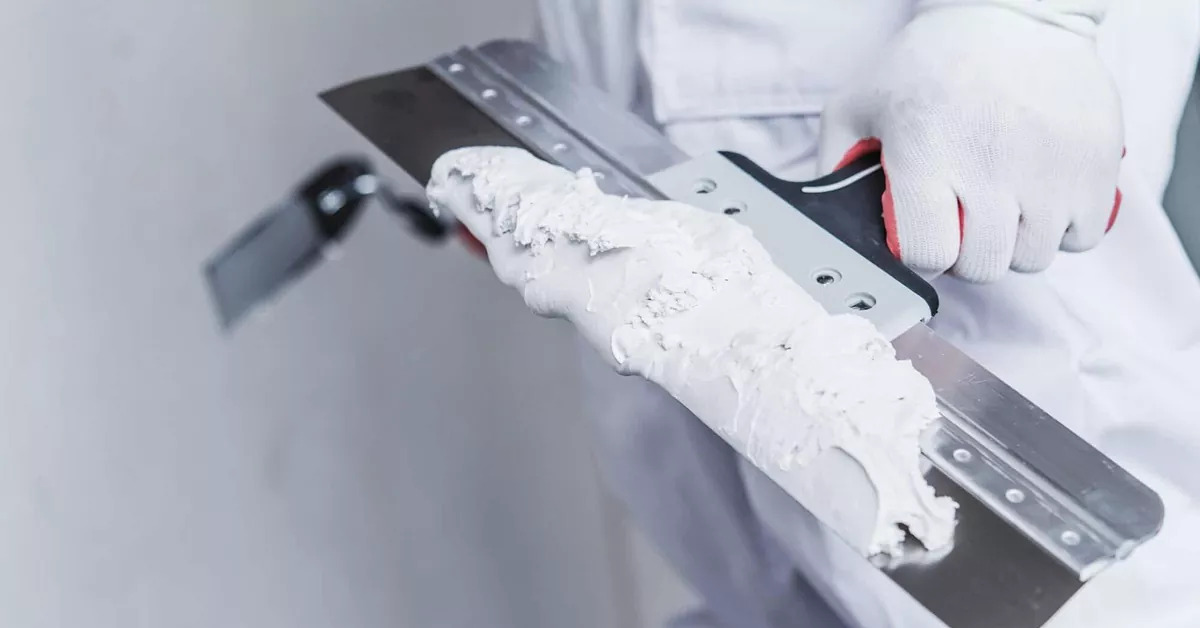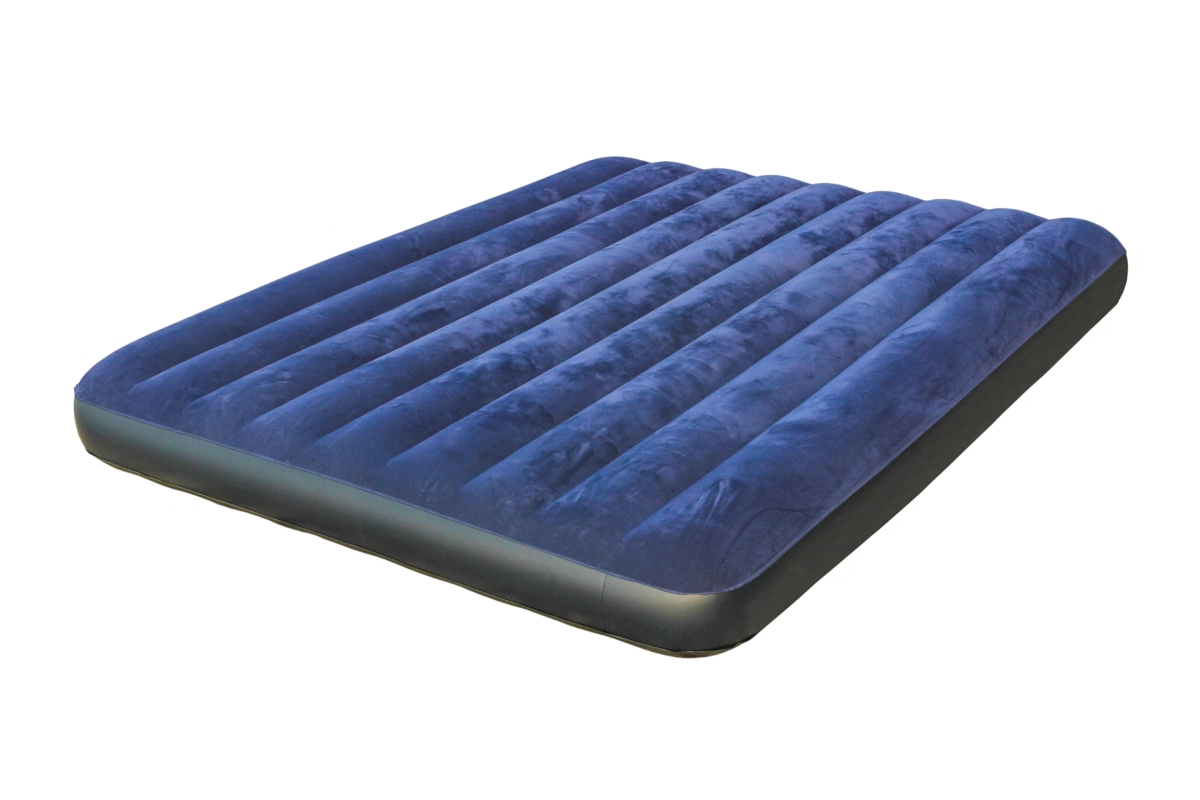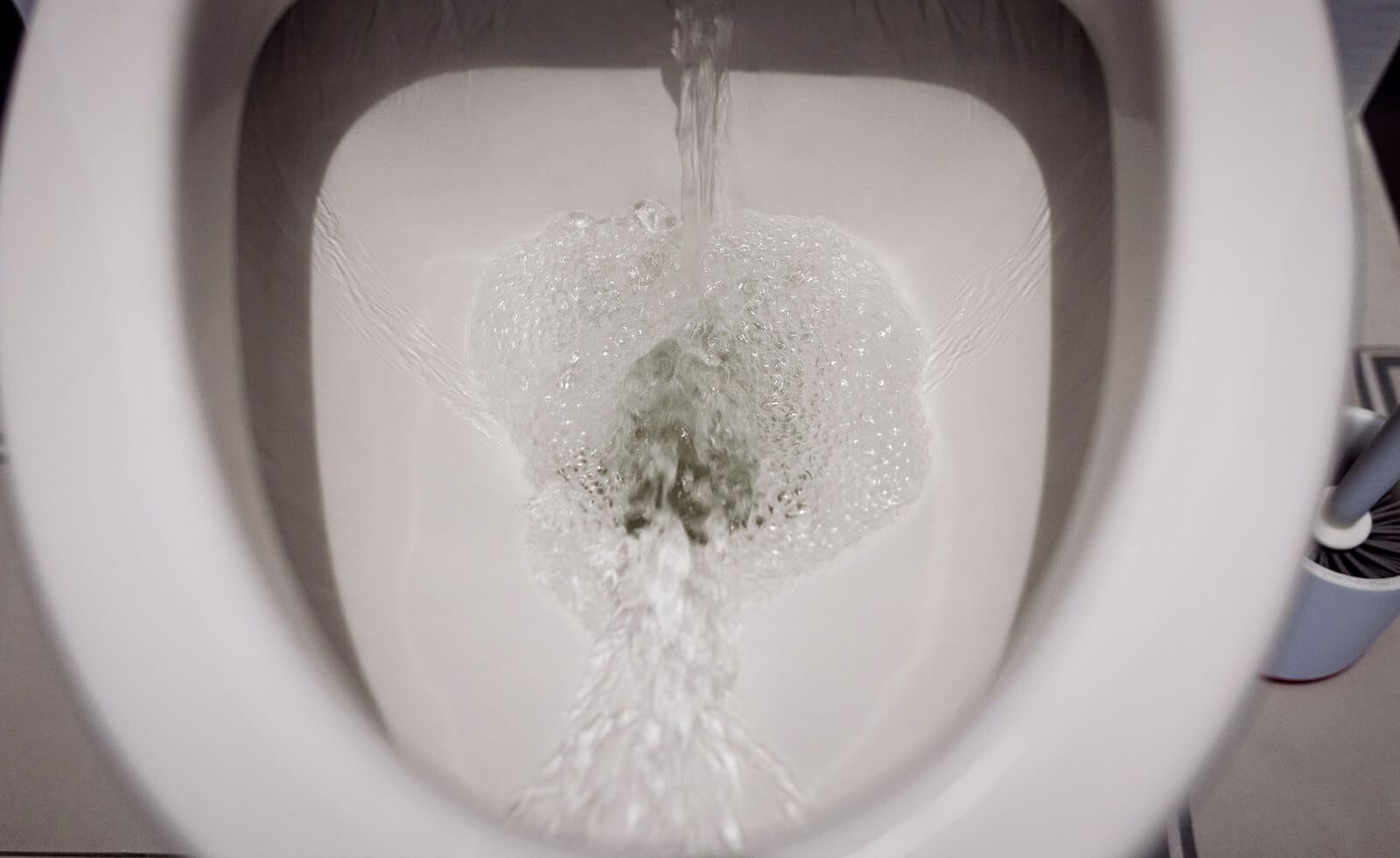Home>Furniture & Design>Interior Design Trends>Why Does An Air Bubble Rise To The Surface Of A Glass Of Water


Interior Design Trends
Why Does An Air Bubble Rise To The Surface Of A Glass Of Water
Modified: February 18, 2024
Discover the science behind why an air bubble rises to the surface of a glass of water. Explore the latest interior design trends and ideas to elevate your space.
(Many of the links in this article redirect to a specific reviewed product. Your purchase of these products through affiliate links helps to generate commission for Storables.com, at no extra cost. Learn more)
Introduction
Have you ever wondered why an air bubble rises to the surface of a glass of water? It's a simple yet fascinating phenomenon that occurs every time you pour yourself a refreshing drink. The movement of the air bubble may seem effortless, but the science behind it is quite intriguing. Understanding the dynamics of air bubbles in water involves delving into the principles of buoyancy and surface tension. By exploring these concepts, we can unravel the mystery behind the mesmerizing ascent of air bubbles in water.
The next sections will delve deeper into the science behind air bubbles, shedding light on the role of buoyancy and the influence of surface tension. As we embark on this scientific journey, we'll uncover the forces at play and gain a newfound appreciation for the captivating dance of air bubbles in water. So, let's dive into the fascinating world of fluid dynamics and unravel the secrets behind the mesmerizing ascent of air bubbles in a glass of water.
Key Takeaways:
- When you see an air bubble rising in water, it’s because of buoyancy and surface tension. The bubble floats up because it’s lighter than water and can slip through the water’s surface easily.
- The size and shape of the bubble also affect how fast it rises. Smaller bubbles rise quicker because they have more surface area. The round shape helps them move smoothly through the water.
Read more: Why Would A Toilet Bubble
The Science Behind Air Bubbles
When an air bubble rises to the surface of a glass of water, it's not just a random occurrence; it's a result of fundamental scientific principles at work. The behavior of air bubbles in water is governed by the interplay of several physical forces, making it a captivating subject of study in fluid dynamics.
At the heart of this phenomenon lies the concept of buoyancy. As the air bubble is released into the water, it experiences an upward force, known as buoyancy, which propels it towards the surface. This force is a consequence of the disparity in density between the air inside the bubble and the surrounding water. According to Archimedes' principle, an object immersed in a fluid experiences an upward buoyant force equal to the weight of the fluid it displaces. In the case of an air bubble, its buoyancy is determined by the volume of water it displaces, causing it to ascend effortlessly through the liquid.
Furthermore, the size and shape of the air bubble play a crucial role in its ascent. Smaller bubbles have a higher surface area-to-volume ratio, which results in a greater buoyant force acting upon them. This explains why smaller bubbles tend to rise more rapidly than larger ones. Additionally, the spherical shape of air bubbles minimizes their contact area with the water, reducing the resistance they encounter as they ascend.
The journey of an air bubble through water is also influenced by the cohesive properties of the liquid. Surface tension, the cohesive force that holds the molecules of a liquid together at its surface, affects the behavior of air bubbles. As the bubble rises, it displaces the water, causing the surface tension to exert a downward pull on the surrounding water molecules. This creates a pathway for the bubble to traverse, allowing it to rise unhindered through the water.
In essence, the ascent of an air bubble in water is a harmonious interplay of buoyancy and surface tension. These fundamental principles of fluid dynamics govern the mesmerizing journey of air bubbles as they gracefully rise to the surface of a glass of water, captivating our curiosity and enriching our understanding of the natural world.
The Role of Buoyancy
The mesmerizing ascent of an air bubble in a glass of water is a testament to the captivating influence of buoyancy. Buoyancy, a fundamental principle in fluid dynamics, plays a pivotal role in orchestrating the graceful rise of air bubbles through the liquid medium. As the air bubble is released into the water, it encounters an upward force, propelling it towards the surface with effortless elegance.
At the core of this phenomenon lies Archimedes' principle, a cornerstone of buoyancy. This principle states that an object immersed in a fluid experiences an upward buoyant force equal to the weight of the fluid it displaces. When an air bubble is introduced into the water, it displaces a volume of liquid equivalent to its own, giving rise to an upward force that guides its ascent. This buoyant force is a consequence of the disparity in density between the air inside the bubble and the surrounding water. The lighter density of the air within the bubble relative to the water causes it to experience an upward push, setting it on a captivating journey towards the water's surface.
The size and shape of the air bubble also influence the magnitude of the buoyant force acting upon it. Smaller bubbles, with their higher surface area-to-volume ratio, experience a greater buoyant force, leading to a more rapid ascent through the water. Additionally, the spherical shape of air bubbles minimizes their contact area with the water, reducing the resistance encountered during their upward movement.
In essence, the role of buoyancy in the ascent of air bubbles is a harmonious interplay of physical forces, culminating in a mesmerizing display of fluid dynamics. This captivating phenomenon not only enriches our understanding of the natural world but also serves as a testament to the elegance and precision of scientific principles at play in the seemingly simple act of an air bubble rising to the surface of a glass of water.
The air bubble rises to the surface of the water because the air inside the bubble is less dense than the surrounding water. This causes it to experience a buoyant force, pushing it upwards.
Surface Tension and Air Bubbles
The interaction between surface tension and air bubbles in water unveils a captivating interplay of forces that shapes the mesmerizing ascent of these ethereal spheres through the liquid medium. Surface tension, a fundamental property of liquids, arises from the cohesive forces between molecules at the surface of the liquid. This cohesive force creates a thin, elastic film at the liquid's surface, giving rise to a phenomenon that profoundly influences the behavior of air bubbles.
As an air bubble rises through the water, it displaces the liquid, creating a pathway through the surface tension. The cohesive forces at the water's surface exert a downward pull on the surrounding water molecules, effectively creating a conduit for the bubble to traverse. This interplay of forces allows the air bubble to ascend unhindered, propelled by the buoyant force and guided by the accommodating nature of surface tension.
The influence of surface tension becomes particularly pronounced in the context of small air bubbles. Smaller bubbles possess a higher surface area-to-volume ratio, intensifying the impact of surface tension on their ascent. This results in a more pronounced interaction between the bubble and the cohesive forces at the water's surface, further facilitating their graceful journey to the top.
Moreover, the spherical shape of air bubbles plays a pivotal role in minimizing their contact area with the water, thereby reducing the resistance encountered during their ascent. This streamlined interaction with the liquid's surface, facilitated by surface tension, allows the bubbles to rise with remarkable ease and elegance.
The captivating dance of air bubbles in water, guided by the harmonious interplay of buoyancy and surface tension, serves as a testament to the intricate forces at play in the natural world. This phenomenon not only enriches our understanding of fluid dynamics but also captivates our imagination, inviting us to marvel at the seamless orchestration of scientific principles that govern the seemingly simple act of an air bubble rising to the surface of a glass of water.
Conclusion
The captivating journey of an air bubble as it rises to the surface of a glass of water is a testament to the harmonious interplay of physical forces and fundamental principles in fluid dynamics. From the moment the bubble is released into the water, it embarks on a mesmerizing ascent, propelled by the buoyant force and guided by the accommodating nature of surface tension. This seemingly simple phenomenon unravels a world of scientific intricacies, inviting us to marvel at the elegance and precision of the natural forces at play.
The role of buoyancy, governed by Archimedes' principle, orchestrates the graceful ascent of air bubbles through the water. As the bubble displaces a volume of liquid equivalent to its own, it experiences an upward force, setting it on a captivating journey towards the water's surface. The size and shape of the bubble further influence the magnitude of the buoyant force, shaping the speed and elegance of its ascent. This captivating dance of buoyancy enriches our understanding of fluid dynamics, underscoring the seamless orchestration of physical forces in the natural world.
Furthermore, the influence of surface tension adds a layer of complexity to the journey of air bubbles in water. The cohesive forces at the water's surface create a pathway for the bubble to traverse, allowing it to rise unhindered through the liquid medium. The interplay of surface tension with the spherical shape of the bubbles minimizes resistance, enabling them to ascend with remarkable ease and grace. This captivating interaction between surface tension and air bubbles invites us to contemplate the intricate forces that govern the behavior of fluids, enriching our appreciation for the captivating dance of air bubbles in water.
In essence, the ascent of an air bubble in a glass of water transcends a simple visual spectacle; it serves as a gateway to the captivating world of fluid dynamics. By unraveling the scientific intricacies behind this seemingly mundane occurrence, we gain a newfound appreciation for the elegance and precision of the natural forces that shape our world. The mesmerizing journey of air bubbles in water not only enriches our understanding of fluid dynamics but also ignites our curiosity, inviting us to marvel at the seamless orchestration of physical forces that govern the captivating dance of an air bubble as it rises to the surface of a glass of water.
Frequently Asked Questions about Why Does An Air Bubble Rise To The Surface Of A Glass Of Water
Was this page helpful?
At Storables.com, we guarantee accurate and reliable information. Our content, validated by Expert Board Contributors, is crafted following stringent Editorial Policies. We're committed to providing you with well-researched, expert-backed insights for all your informational needs.
















0 thoughts on “Why Does An Air Bubble Rise To The Surface Of A Glass Of Water”